Military Raitts
----------
The Soldiers and Marines
Major George Raitt, Ensign, 36th Regiment, May 1795, stationed at Waniore (East Indies); Lieutenant in 72nd Regiment, Ceylon, Jan 1796; captain, June 1803, accompanying his company in the expedition under Sir D. Baird against the Cape of Good Hope, from 1805-1810; Major of brigade (Nov 1810) to the troops, destined to cooperate with those from India in the attack on the island of Mauritius, where he continued until the return of the 72nd Regiment to the Cape of Good Hope in June 1814. Joined 2nd Battalion, 72nd Regiment in Ireland in June 1815, remaining there until Sept 1816, when after 21 years of uninterrupted service in the 72nd Regiment, he was compelled to effect an exchange to the 2nd battalion, 84th Regiment, his private affairs not permitting him to leave Europe. He was placed on half-pay on 12 Apr 1818.
Arthur John Rait, Esquire, Companion of the Most Honourable Order of the Bath, Lieutenant-Colonel {retired) Royal Artillery, Justice of the Peace and Deputy-Lieutenant for the county of Forfar, was born in 1839 and was the eldest son of James Rait of Anniston, Captain 15th Hussars and Lieutenant-Colonel 1st Lancers British Auxiliary Legion in Spain, and Knight of St. Ferdinand. He was entitled to wear the Military Cockade. Arthur was present at the capture in 1854 of the fortifications at Bomarsund which the Russians had built on the Aaland Islands in the Baltic during the Crimean War. Having joined the Royal Artillery in 1857, he served in the Rakamundel Field Force in 1859, and as a Lieutenant in the 4th Brigade Royal Artillery he fought during the Maori Wars in New Zealand in 1864-1866, becoming a Captain and earning his Brevet-Major for services against the Ashanti in West Africa. He was one of the first people to use the Gatling gun in 1874 and, while in Africa, he raised a force of native soldiers which became known as Rait’s Artillery.
Arthur’s only son, Walter Garnet Rait, was born in November 1878 and was educated at Rugby. He entered the King's Own Scottish Borderers in August 1898 and as a 2nd Lieutenant embarked for South Africa with his battalion in December 1899. He served in the Cape and Orange River Colonies, was present at the battle of Paardeberg and took part in the advance on Bloemfontein. He died of enteric fever at Wynberg on 22 June 1900 and is buried there (see also Raits of Anniston).
Lieutenant-Colonel George Edward Raitt was the son of Lieutenant-Colonel Robert Raitt, 2nd Regiment and was born on 17 December 1780. As an Ensign, 2nd Regiment of Foot in July 1796, he served with the Queen's Royals in Ireland during the Rebellion of 1798, and was present at the capture of Wexford from the rebels, and at the surrender of the French at Ballinamuck. He accompanied the expedition to the Helder in 1799, and was present at the subsequent battles in September and October. He became a Captain-Lieutenant in 1800 and served as Aide-de-Camp to Major-General Hamilton in the Egyptian campaign of 1801, being present at the siege and capture of Fort Aboukir, battle of the 21st March, siege and capture of Fort St. Julian, affair of Rahmania, and blockade and surrender of Alexandria (Turkish War Medal). He landed in the Peninsula (Spain and Portugal) in August 1808, and was present at the battle of Vimiera, in all the operations of Sir John Moore's army on its retreat, and at the battle of Corunna. He accompanied the expedition to Walcheren in 1809, and was present at the capture of Flushing. In 1810 he proceeded to Portugal as aide-de-camp to Major-General Houstan; he was present during the operations of Massena's retreat, and battle of Fuentes d'Onor. He was Assistant-Adjutant-General in 1813 in the North West District of England. Promoted to brevet Lieutenant-Colonel in 1814, he was appointed Deputy Quarter-Master General to the Forces in Malta in September of that year, subsequently becoming Deputy-Adjutant-General in Corfu to the forces serving in the Mediterranean in 1816. He exchanged to the half-pay of the 90th Foot in 1817 and served as Barrack Master at Bristol. He received the War Medal with four Clasps. He died in Kensington, London, England on 8 July 1859.
His eldest son, Major George Dalhousie Jolliffe Raitt, born in 11 September 1807, followed his father into the 2nd Foot. He was commissioned as an Ensign in 1823, became a Lieutenant in 1825, Captain in 1831 and Major in 1839. Serving with the 2nd (Queen's Royal) Regiment, he was wounded in the assault and capture of the citadel of Ghuznee on 23 August 1839. He died of sunstroke at Mount Aboo, Gujerat, India in 1843.
Ernest Robert Raitt, born in 1831, was the fifth but only surviving son of the above Lieutenant-Colonel George Edward Raitt. Unlike his father and elder brother, he does not appear to have been a military man, but his offspring certainly were. They include: George Dalhousie Churchill Raitt, born 1854; Herbert Aveling Raitt, born 1858; Francis Jolliffe Raitt, born 1860; and Arthur Douglas Raitt, born 1869.
Major George Dalhousie Churchill Raitt was commissioned as a Lieutenant in the Royal Marine Artillery in 1872. He was posted to HMS Achilles in 1875 and served in the Battalion of Royal Marines sent to South Africa for special services in the Zulu War in 1879. During the Egyptian War (1882-1889) he served in HMS Alexandra and was present at the bombardment of Alexandria in 1882. He became a Major (Instructor of Musketry) in 1893.
Major-General Sir Herbert Aveling Raitt, K.C.I.E., C.B. (1858-1935), son of E. R. Raitt of Broughton’s, Newnham, Gloucestershire, was commissioned Second Lieutenant, 2nd North Staffordshire or 80th Regiment Foot in 1878. He served with the regiment in the South African War 1878-79, including in the operations against the Sekukuni, and the storming and capture of their stronghold; He was Adjutant to the 2nd Battalion from February 1881-June 1884, then served in Sir Charles Warren’s peaceful expedition into Bechuanaland, 1884-85, where he commanded a troop of Diamonds Field Horse. He served with the Egyptian Army under Lord Kitchener for two years from 1894. Promoted to Major in 1896, he sailded to South Africa on the Briton and served in the Boer War, where he was Commanding Officer of the 1st Battalion South Staffordshire Regiment, from December 1900. He was promoted to Colonel in 1904 and commanded the South Midland Division from 1908-11. Becoming a Major-General in 1912, he was posted as Commanding Officer of the Mandalay Brigade during 1913-14; and as General Officer Commanding Burma Division he commanded the troops during the Kachin Rising of January-February 1915, overcoming all opposition encountered, capturing rebel stockades, and destroying implicated villages. He retired from his command in November 1918 and was appointed K.C.I.E in 1919.
Lieutenant-Colonel Francis Jolliffe Raitt was commissioned as a Lieutenant in
the Royal Marine Light Infantry in 1889 and served during the Egyptian War in 1882. He was present at the action at Mallaha Junction and Kassassin, where he served as Acting Adjutant of the R.M.L.I. Battalion present in Egypt during July and August. He became a Major in 1897, but retired and took up an appointment with the Recruiting Staff in 1906. He re-engaged for active service for the Great War and was appointed General Staff Officer, 2nd Grade, War Office, in 1914. He was subsequently appointed Temporary Lieutenant-Colonel Recruiting Service, York District, in 1915. A member of I Zingari and Free Foresters, he died in an Edinburgh nursing home on 29 September 29 1944, aged 84. Very well known at Lord's, he, perhaps, was most popular in Yorkshire, his annual cricket week at Howsham Hall being one of the social events of the season. During many years he took part in Yorkshire Gentlemen matches, country house and regimental cricket, besides appearing occasionally for Hampshire. A senior member of York Race Committee, he acted as steward at many race meetings in the North.
Captain Arthur Douglas Raitt, another son of E. R. Raitt, was born on 10 January 1869, educated at St. Alban’s School and at the United Services College, Westward Ho! in Devon. He was commissioned as Second Lieutenant, 3rd Battalion King’s Own Yorkshire Light Infantry in 1890, transferring as Lieutenant, 2nd Battalion The Queens Royal West Surrey Regiment the following year. He became a Captain in 1898 and serving with his battalion in South Africa from October 1899 and being present at the battle of Colenso. He was killed in action at Spearman’s Camp, Upper Tugela, near Spion Kop, with General Hildyard's Brigade in Natal on 21 January 1900. The troop’s remained in camp, watching the Boers strengthening their positions on the far side of the Tugela River, which was not crossed until the 18th of January 1900. On the 20th of January two companies of the Queen’s were ordered to make a frontal attack on a Boer position in order to cover a flanking movement by other units on Bastion Hill. Captain Raitt, descendant of the famous Raitts in the Regiment, was killed when four out of the five officers were hit. He was 30 years old and is buried in Rangeworthy Cemetery, Acton Holmes, Ladysmith, Kwazulu-Natal. His name is inscribed on a memorial in the cemetery as well as on a tablet in his old college at Westward Ho! It is also engraved on a tablet at Guildford, erected by his comrades in memory of all ranks of the Queen's Royal West Surrey Regiment who fell in the Boer war.
Like Rifleman Joseph Raitt of Lyttelton, New Zealand (see New Zealand Raitts and under Raitt Anecdotes), two sons of Alexander and Susan Raitt from Barry’s Reef in Victoria, Australia saw action in France during the 1st World War. Private Ernest William Raitt left Australia with the 28th Battalion when he was still 16 and saw service in Gallipoli from where he was evacuated. He was one of the first Australian soldiers to go to France and was reported missing at Pozieres on 29 July 1916 - he was just 18. His brother, Allen, who enlisted at the same time, left Australia with Reinforcements for the 16th Battalion and was only in France for a few months when he was taken prisoner at Bullencourt on 11 April 1917. He was held as a POW in Germany for some twenty months before being repatriated at the end of the war.
Colonel Charles Robert Raitt (1811-1876), 80th Regiment of Foot saw service in Egypt and Australia. His career and family are documented on the under Hampshire Raitts page. As is that of his father Charles Frederick Raitt (c1784-1831), 13th Regiment of Light Dragoons, which saw action at the Battle of Waterloo and in Crimea.
Charles Robert's son, Lieutenant Charles Henry Sidney Raitt, of the 90th Light Infantry Regiment, died of fever in Malta on 28th April 1855, en route to the Crimea. He had landed in Malta from HMS Gibraltar on 12th March 1855. He is buried in Msida Bastion Cemetery, Malta. He was aged 18.
Charles Robert's grandson, Charles Henry Raitt, was active in Gallipoli in World War 1 and details of his Army career in Australia as well as his trials and tribulations in his family life are to be found on separate pages.
----------
The Airman
Major William Wallace Raitt, United States Air Force, was awarded the Silver Star (America’s third highest military decoration for valour in the face of the enemy) for gallantry in connection with military operations against an opposing armed force while serving with the 44th Tactical Fighter Squadron, in action on 11 August 1967, over North Vietnam. On that date, he led a flight of four F-105 Thunderchiefs against the Hanoi Railroad/Highway Bridge. Completely disregarding his own personal safety, Major Raitt flew through heavy 85-mm. flak, evaded four SA-2 surface-to-air missiles and delivered his ordnance precisely on target. He was subsequently presented with a Bronze Oak Leaf Cluster in lieu of a Second Award of the Silver Star for gallantry in connection with military operations against an opposing armed force while serving with the 44th Tactical Fighter Squadron, in action on 19 November 1967, near Hanoi, North Vietnam. On that date, he was credited with destroying an actively firing surface-to-air missile site which was a threat to sixteen F-105s targeted against a North Vietnamese concrete manufacturing plant. Although his aircraft's hydraulic system had sustained serious damage from an exploding surface-to-air missile, Major Raitt disregarded his own safety, remaining in defensive formation to assure mission success, and courageously delivered his ordnance directly on target. Besides the Silver Star, William also received the Distinguished Flying Cross, Air Medal with eight Oakleaf clusters, Joint Service Commendation Medal and the Meritorious Service Medal. He ended his career as a Lieutenant Colonel William W. Raitt was born in Omaha, Nebraska in 1931 and died in 1993 in Liberty, Utah. He was the great grandson of James Dorward Raitt of Arbroath.
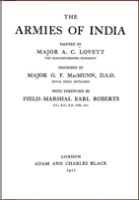
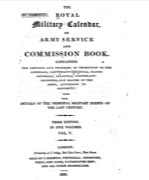
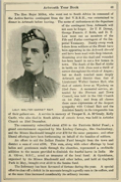
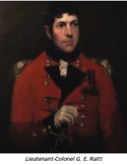
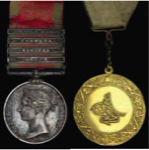

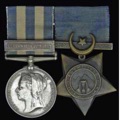
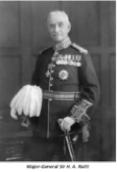
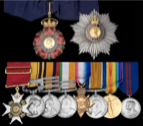
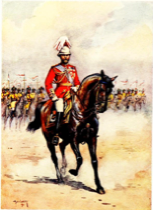
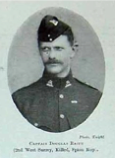
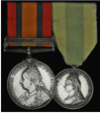
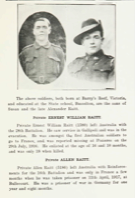



Over the centuries, Raitts have served in the Armed Forces all over the world - many in Victorian and earlier times joining the Army or the Navy of their own free will, albeit following in family footsteps. This page is mainly devoted to those whose service careers, by virtue or rank and/or decorations, are more well-known. It does not include merchant seamen, many of whom will be found on the various Raitt Master Mariners pages: Arbroath Mariners; Other Raitt Mariners; Captain Charles Raitt. The exploits of the gallant Royal Navy Captain William Raitt of the Scout have been moved to a new page detailing the experiences of Raitt captains in the early years of the Napoleonic Wars. Several other Raitt soldiers or sailors and their careers are mentioned on the Raitt Anecdotes page and further details about yet others will be found on their respective family pages or on the separate Raitts in World War 1 page.
